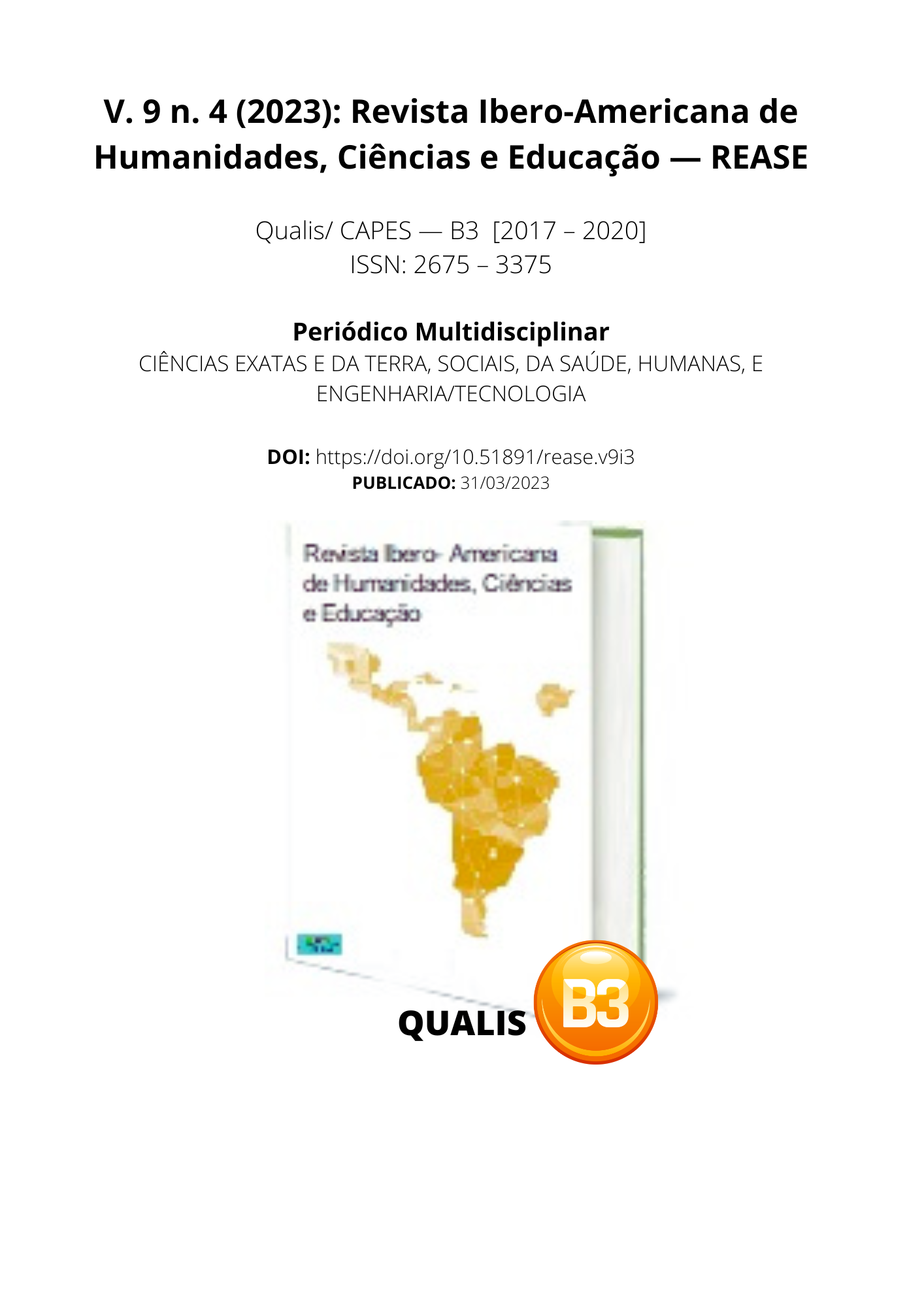VERTICAL GARDENS AS AN INTERDISCIPLINARY PEDAGOGICAL PRACTICE AND ENVIRONMENTAL EDUCATION AT FRANCISCO SILVA CAVALCANTE MUNICIPAL SCHOOL, FORTALEZA, CEARÁ, BRAZIL
DOI:
https://doi.org/10.51891/rease.v9i4.9112Keywords:
Vertical gardens. Environmental education. School. Vegetables. Health.Abstract
Work at school should not only be about inferring scientific concepts, but about promoting and guiding environmentally sustainable attitudes and actions. Thus, developing means of learning with which the student can interact as a researcher, instigating their curiosity and capacity for observation and logical reasoning is a very relevant task. The vertical garden project, as a practical and educational activity, incubates interesting objectives such as: serving as a model for understanding processes of plant reproduction, photosynthesis and healthy nutrition; promote interdisciplinarity between different curricular themes and environmental education; understand and apply the concept of sustainable agriculture; promote discussions about what pesticides are and what their consequences are in agriculture; generate planning, organization and group work learning skills; encourage the consumption of greens and vegetables in order to improve health. The name “vertical garden” consists of the fact that the vegetable gardens can be hung or fixed vertically, such as on walls and trees, thus optimizing space. The construction materials of vertical gardens are mostly light and easy to work with, these materials being recyclable or reusable, generally easily accessible, such as PET bottles. As a pedagogical proposal to work with Environmental Education, with the objective of generating environmentally sustainable attitudes and actions together with the students, vertical gardens were planned, designed and assembled, in the model of towers, to be installed in internal spaces (walls) of the School Municipal Francisco Cavalcante, located in the city of Fortaleza, Ceará. The specific objectives of the aforementioned work consist of promoting interdisciplinarity between science, mathematics, geography, arts, history, Portuguese language and other disciplines in the context of environmental education; experience the scientific method and foster citizenship in the context of caring for the environment and preserving non-renewable natural resources. The design of the vertical gardens presented in the present work is in accordance with the principles of the Universal Design of Learning (DUA), bringing in its methodological body means that facilitate teaching and learning in the context of diversity in the common classroom. Vegetable gardens in the format of vertical agriculture are models that can be replicated in other schools, in backyards and in other environments in the health and economic contexts. If cultivated and well cared for, these garden models can subsidize food prepared for lunch and/or school meals, this being a socio-educational action where students interact in a concrete way with the natural sciences, exact sciences, human sciences, the school environment and their actors. Economics, nutrition and health are cross-cutting themes that dialogue with the design, assembly and installation of vertical gardens at school, in addition to walking alongside the sciences with information that promote benefits for improving the quality of life.
Downloads
Downloads
Published
How to Cite
Issue
Section
Categories
License
Atribuição CC BY

